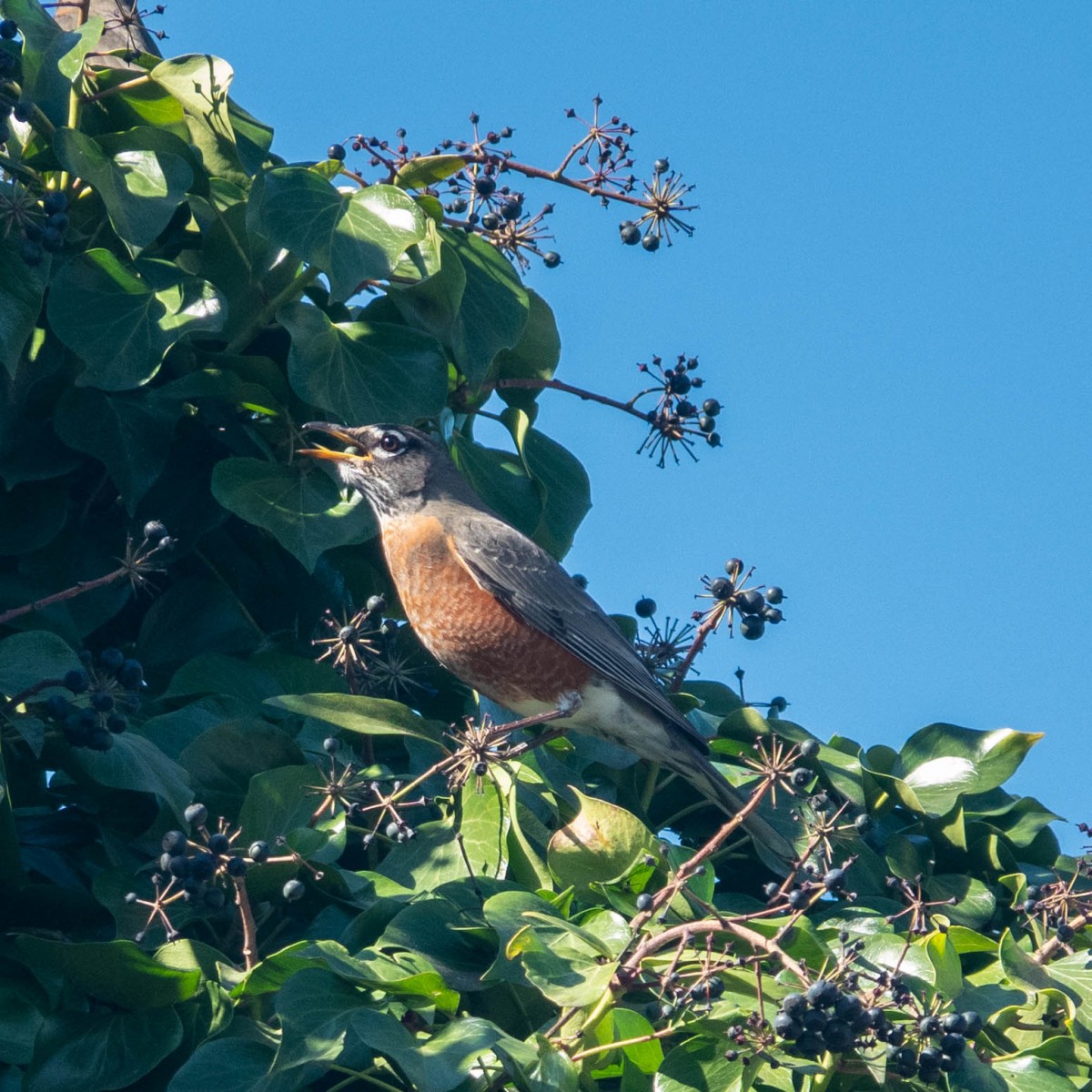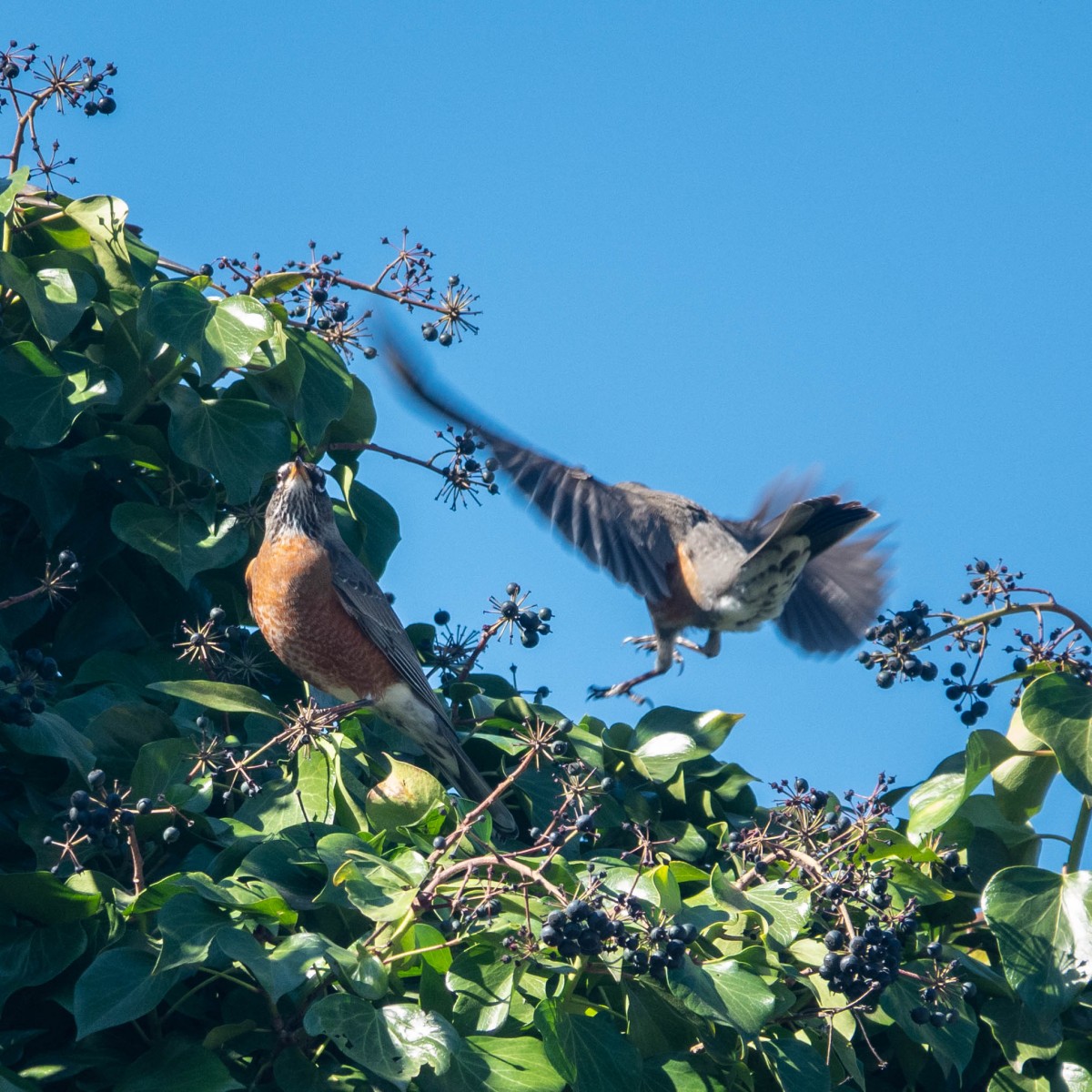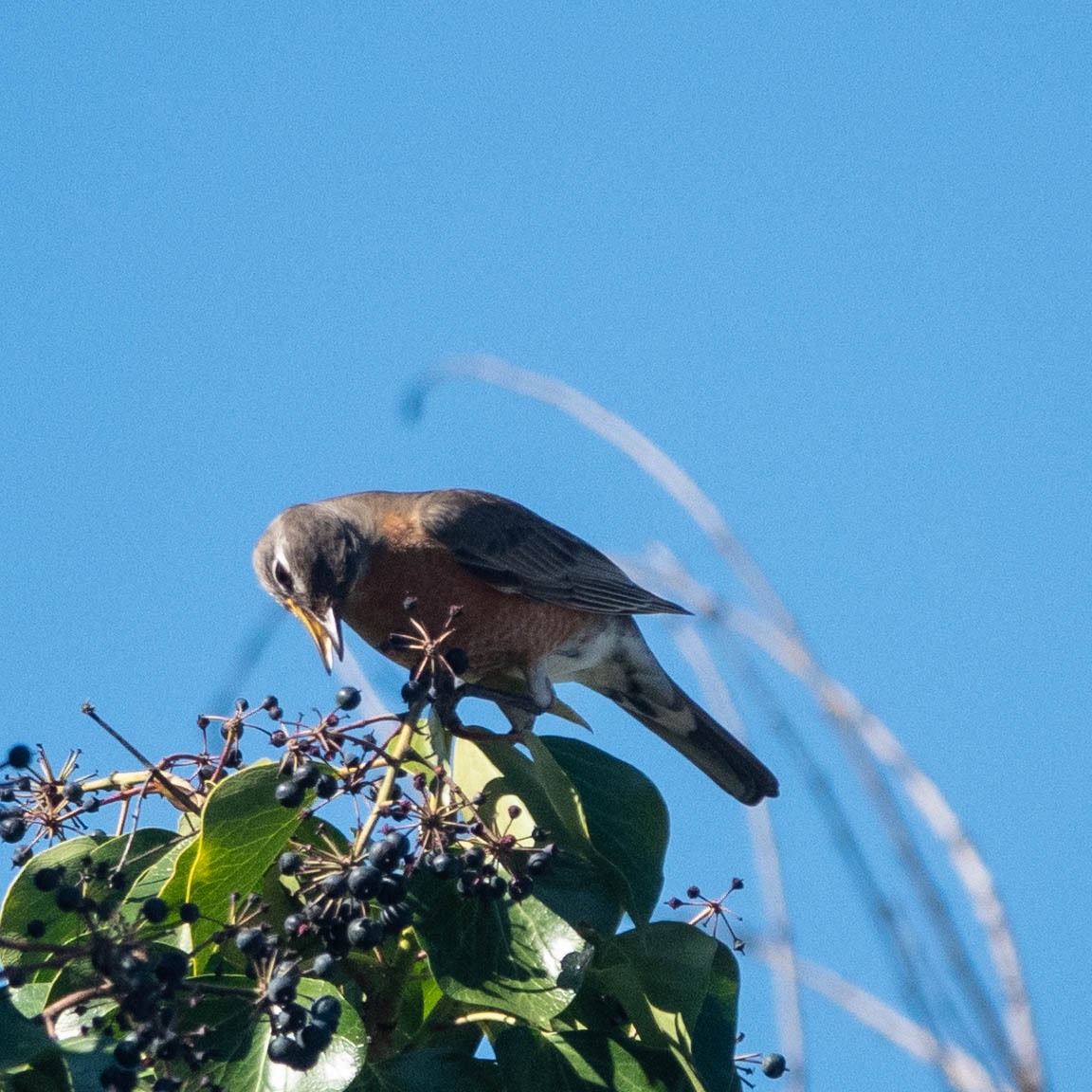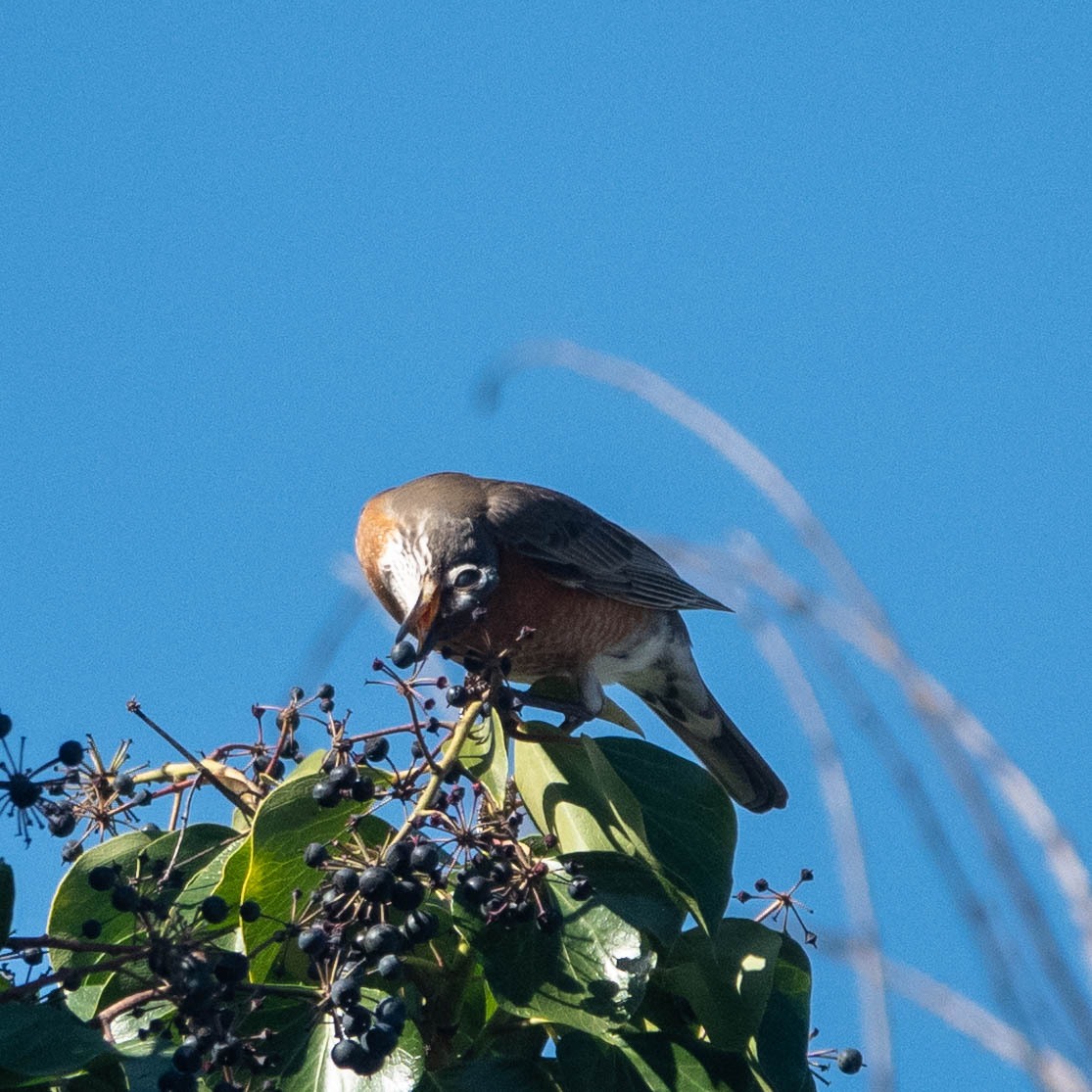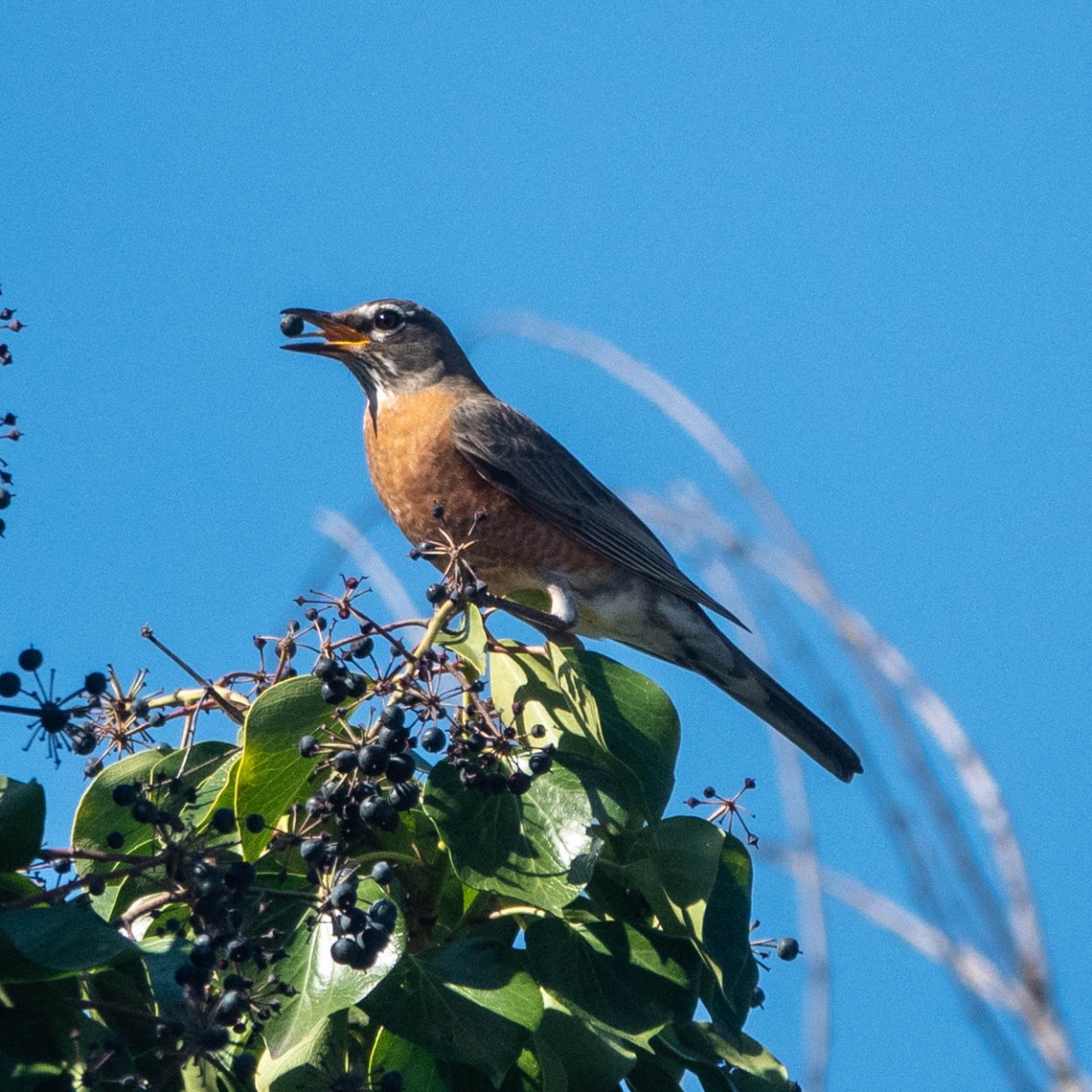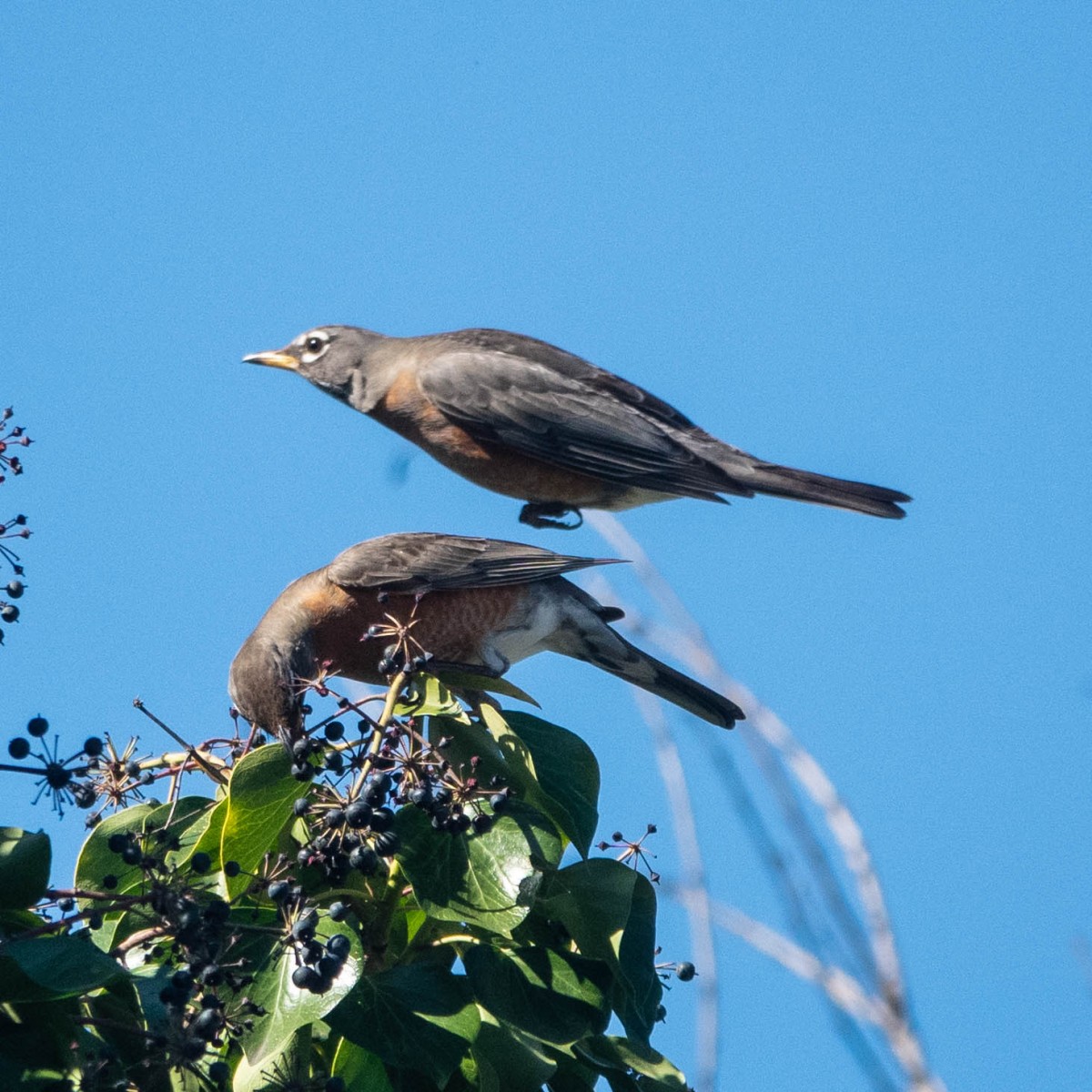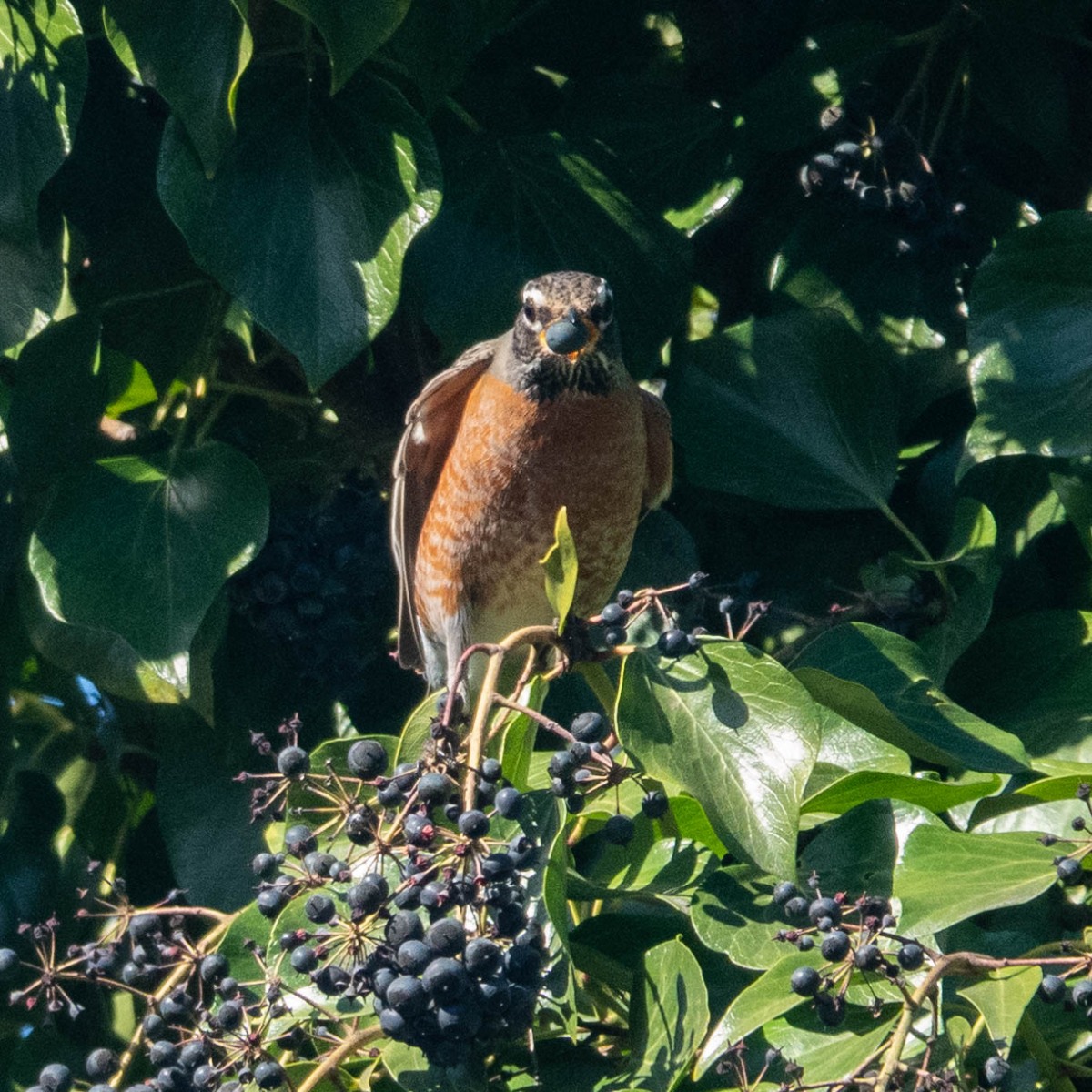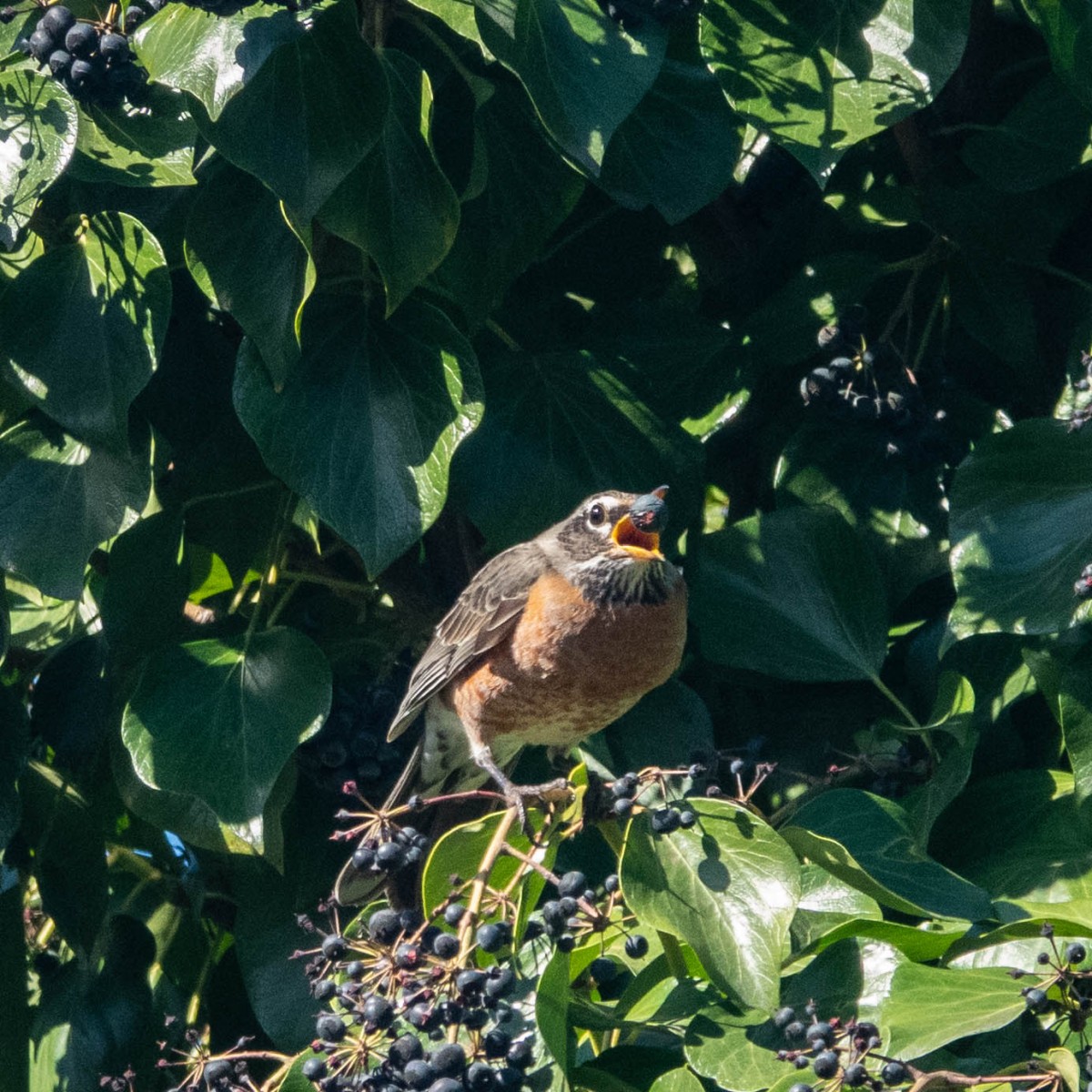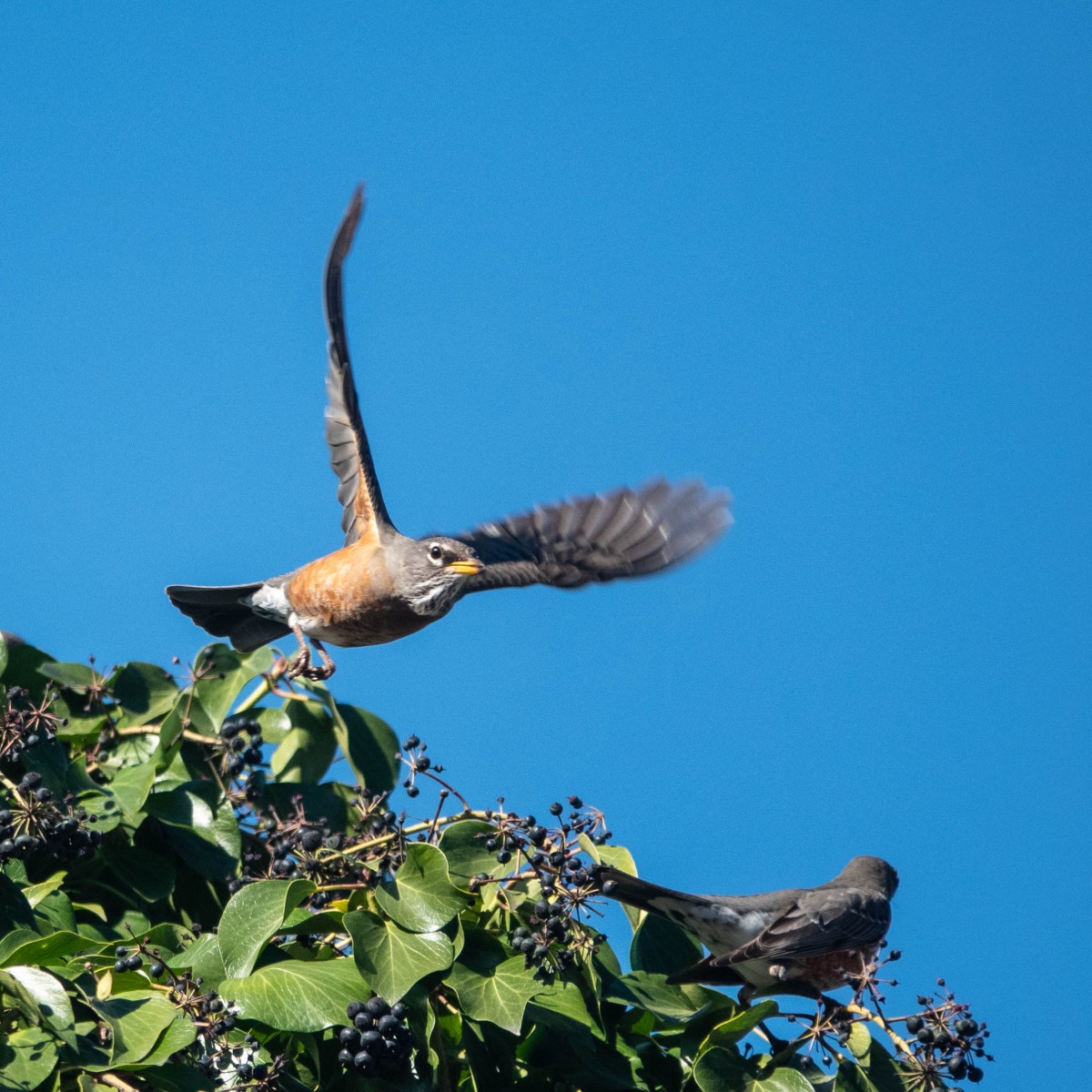Walking home from breakfast, Katherine and I saw a flock of American Robins flying in and out of a towering English Ivy vine.
We saw them stop to gobble a berry or two before flying off to a more attractive cluster.
We beat the English in 1783, but in many parts of the United States, we are battling them still in the form of this invasive English Ivy. It’s so bad that, according to Wikipedia, the sale or import of English Ivy is banned in Oregon!
(Nancy? Carol? And all my other Oregonian family and friends, did you know this??)
The tasty (for birds–the berries are somewhat poisonous to humans and animals like rabbits) ivy berries are rich in calories — containing, according to the United Kingdom’s Royal Society for the Protection of Birds, nearly as many calories as Mars bars (gram for gram).
“Ivy has been predominately spread by human action,” Wikipedia adds, but it is also spread by the “at least 16 species” of birds” who feast on the berries. The seeds are then passed through their systems into new locations.
Below are some of the pictures of the American Robin traitorously spreading the English Ivy. (Well, technically, the “spreading” will occur between 10 minutes and 3 hours later — though larger birds tend toward the 3 hour time. For a fun article about birds and pooping, read this!)
A “cool fact” from Cornell’s All About Birds is that robins “eat different types of food depending on the time of day: more earthworms in the morning and more fruit later in the day.” The pictures of the robins in the English Ivy were taken just before 10 A.M. The photo below was taken at 7:43 A.M.

